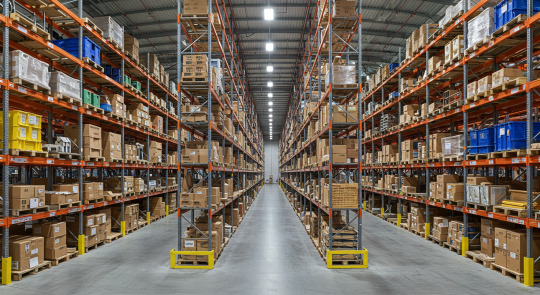#InnovativeStorageHacksUsingIoTandMobileApps
Explore tagged Tumblr posts
Text
From Boxes to Bytes: Digitalising Your Storage Systems

Remember the days when storage rooms were filled with rows of boxes, stacked high with paper files, receipts, and old invoices? While that system had its place, it often meant slow retrieval times, the constant risk of lost documents, and an ever-growing need for physical space.
Fast forward to today, and the shift is clear: the world is moving from boxes to bytes. Digitalising your storage systems isn’t just about embracing new technology; it’s about improving efficiency, saving space, and future-proofing your operations.
This article takes a closer look at what digital storage means, why it matters, how to get started, and what to consider along the way. Whether you're part of a small team or managing a larger organization, this guide will walk you through the essentials of moving your data into the digital age.
Why Digitalising Storage Matters More Than Ever?

Digitalisation is more than a trendy buzzword; it’s become a necessity in today’s fast-paced work environments. As remote work becomes more common and data grows at an unprecedented rate, traditional storage systems can’t keep up.
Here are some key reasons why digitalising your storage systems should be a top priority:
Efficiency: Searching for digital files takes seconds, not hours. With the right tagging and filing system, any document is only a few clicks away.
Security: Digital files can be encrypted and backed up regularly, minimizing the risk of loss due to disasters, theft, or human error.
Space Saving: Digital documents don’t require filing cabinets or storage rooms. This frees up physical space for more productive uses.
Scalability: Digital storage scales effortlessly. As your business grows, your storage can grow with it, without the need to build a bigger archive room.
Accessibility: Team members can access what they need from anywhere with an internet connection. This is crucial for hybrid or fully remote teams.
When seen together, these benefits highlight how digitalising your storage isn’t just an IT decision, but a strategic move for overall business agility.
Steps to Successfully Transition from Physical to Digital Storage
Moving from physical files to digital storage systems may seem overwhelming at first, but breaking it down into manageable steps can simplify the process. Start by assessing what you have. Identify which documents are essential and need to be kept, not everything in your boxes may be worth scanning.
Next, create a clear plan. Define your goals, whether it’s improving speed, increasing security, saving space, or all of the above. Decide on a timeline and assign responsibilities to specific team members.
Then, choose the right tools. You’ll need a reliable scanner and robust document management software. It's important to select tools that support optical character recognition (OCR) so that scanned documents can be searched later.
Before you start scanning, organize your documents. Group them into logical categories so that your digital folder structure mirrors your physical setup. This makes navigation easier down the line.
The concept behind From boxes to bytes: digitalising your storage systems is about transforming how you handle information. When scanning and storing, make sure files are named consistently and saved in a well-structured directory system. Don’t forget to back up everything using cloud storage, external hard drives, or both. Redundancy is key to ensuring that you don’t lose data during the transition.
Finally, train your team. Make sure everyone understands how to use the new system. This will help maintain consistency and reduce the risk of confusion or misfiled documents.
Common Challenges and How to Overcome Them
As with any significant shift, digitalising storage systems presents a few challenges, but being aware of them can make the transition smoother. One common obstacle is resistance to change. People often feel comfortable with the systems they know, even if they’re outdated. Overcoming this requires clear communication, emphasizing the long-term benefits of digital storage, celebrating early successes, and ensuring proper training for everyone involved.
Another issue is time and resource constraints. Digitising large volumes of paper documents can be labor-intensive. A smart approach is to prioritize scanning the most frequently used files first. If feasible, hiring a document scanning service can also ease the burden.
Technical difficulties are not uncommon, either. Bugs in software, poor OCR (optical character recognition) performance, and inconsistent file naming can disrupt workflow. These problems can be minimized by choosing reliable software, setting up a clear file naming system, maintaining regular backups, and designating someone to oversee quality control.
Finally, legal and compliance considerations must be addressed. Every industry has its own regulations for data storage, privacy, and retention. Before going fully digital, it’s essential to ensure that your new system complies with all relevant standards to avoid potential legal pitfalls.
The Future of Digital Storage and Staying Ahead

Digital storage systems are constantly evolving. Cloud storage is becoming more secure and affordable, while AI is being used to automate tagging, filing, and even retrieving documents. Staying informed about these trends can help you adapt more quickly and get the most from your investment.
Here are a few forward-looking practices to consider:
Cloud Integration: Many systems now offer hybrid solutions that store some files locally and others in the cloud. This offers a balance between speed and accessibility.
Automated Workflows: AI and automation tools can tag files, route them to the right folder, or alert team members when documents are ready.
Mobile Accessibility: Ensure your storage solution offers mobile access. This allows team members to retrieve or upload files on the go.
Regular Audits: Periodically review your system to remove outdated files and improve organization. A digital system should evolve as your business does.
By staying proactive and open to updates, you ensure your digital storage remains efficient, secure, and scalable.
Conclusion
Transitioning from physical boxes to digital bytes isn’t just a matter of convenience; it’s an investment in the future. By digitalising your storage systems, you streamline operations, safeguard information, and empower your team to work smarter.
Yes, the process takes time and planning, but the long-term rewards far outweigh the initial effort. With the right approach and tools, anyone can take their first step toward a more organized, accessible, and resilient system. As digitalisation continues to reshape the way we work, now’s the perfect time to make the switch and stay ahead of the curve.
#HowtoChoosetheRightFreightTruckforConstructionMaterials#InnovativeStorageHacksUsingIoTandMobileApps#FromBoxestoBytes:DigitalisingYourStorageSystems#HowRetailGiantsAreDisruptingtheAutoServiceIndustry#AreOne-StopAutoShopstheFutureofVehicleMaintenance?
0 notes